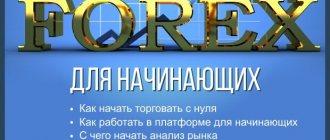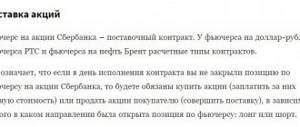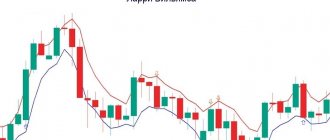Futures are a special type of contract between investors for the purchase (sale) of a tangible asset or service. Such an agreement can be concluded on currency exchanges. Due to the speculative nature of futures, they can be used by experienced and novice traders to make money. Before you begin, it is worth familiarizing yourself with the secrets of trading in the futures market from experienced traders.
How it works
A futures is a contract between 2 parties to a transaction that fixes the price of a product or service for a limited period. In this case, the buyer and seller are obliged to complete a transaction at this price on the specified date, regardless of changes in the financial situation on the market. With a successful transaction, the buyer can make money on exchange rate fluctuations.
Similar economic strategies have been used since the days of merchant trade. At that time, the role of an asset was played by seasonal goods, the price of which fell with a large harvest. Experienced merchants preferred to make deals in advance, providing themselves with a profit greater than the market could provide, and protecting themselves from a possible collapse in prices.
Advantages and disadvantages
Futures trading has a number of advantages:
- A wide range of assets for investment in different areas and for different amounts. You don't need a lot of money to enter the futures market.
- Leverage, which ensures increased profits in case of a successful transaction.
- An investor can choose from several strategies based on the liquidity and volatility of different contracts.
Liquidity refers to the ability of a contract to be quickly sold. This indicator is calculated based on statistical data, i.e., based on information from previous transactions. The volatility of an asset refers to its fluctuations in price. The indicator is also statistical; based on historical volatility (i.e., what happened in the past during transactions with an asset), the expected volatility is predicted.
Futures trading is not without its disadvantages:
- The contract is concluded for a period of no more than 3 months. Long-term investments are impossible in such transactions.
- Working with assets and calculations requires experience, which novice traders lack.
Without knowing how to make money on futures, taking into account the economic situation and the characteristics of different assets, a novice trader can lose a large part of his capital.
The difference between a futures and a stock
Financially illiterate traders do not know what futures are or how they differ from stocks. The similarity of the mechanisms for working with these assets is misleading - each of them is bought for a more profitable sale in the future.
The differences are:
- A futures asset is an instrument that protects against changes in the price of a commodity or currency in the future. At the same time, a share is not just a security, but a document that transfers part of the company into the hands of the owner of the asset. Unlike short-term assets, shares are inherited after the death of the owner; if desired, it can be gifted to another individual or legal entity.
Shareholders receive monthly, quarterly or annual dividends (depending on the company's payment policy). After purchasing a futures, the asset does not bring any profit to the owner other than the profit from the sale.- The promotion is valid for an indefinite period. The futures contract is valid until the transaction is closed, this period does not exceed 3 months.
- Futures trading does not require a lot of capital. Large sums are needed to purchase shares in order to make money on resale or ownership of securities.
The conditions for concluding transactions also differ. To buy or sell futures, you do not need to pay a large commission, nor do you need to spend money on paying for storing securities in a depository. At the same time, to work with futures you will have to spend money on paying for leverage.
Risks
When trading on trusted exchanges, the investor risks his funds due to the specifics of futures. These assets are financially unstable, so without experience and knowledge it is difficult to calculate the profitability of a particular transaction.
There is another danger - working with unscrupulous traders and shell companies. Before you trust them with your money and start buying the “futures” offered, it is worth remembering that such financial assets are an element of the financial stock market.
This means that only those sites and companies that have a license from the Central Bank can sell them. Information about such traders is publicly available on the Internet resource of the Central Bank of the Russian Federation.
Futures Contracts - History
Almost all futures markets are derived from commodity markets. They were originally created for farmers, miners and oil producers who want to deal with the risk of not knowing the price they will receive for their product in the future. This is the reason all futures markets were born.
The plan was for the seller (the farmer) and the buyer (the industrial company) to commit to exchanging a product at a fixed price. Since then, futures trading has attracted more markets, as well as more buyers and sellers.
Although the futures market is primarily a market for commercial and institutional traders, it also attracts speculators - people who profit from picking the right market direction.
But with the advent of technology and super fast computers, many traders prefer to trade CFDs (or contracts for difference). In this article, we will discuss everything you need to know about futures trading, CFDs, the pros and cons of each product, the markets you can trade in, and how to develop a strategy to use both of these products.
How to access the CME and Forts exchange?
Traders from Russia have access to 2 exchanges for futures trading: CME and FORTS. The headquarters of the first organization is located in Chicago, the second is a representative of the Russian stock market.
CME is a world-famous trading platform. The only foreign exchange cooperating with Russian investors. There is a Russian-speaking support service on the site. It is possible to replenish the deposit account with national currency (rubles).
To work on this exchange, you will need to connect through the Russian subsidiary of a Western broker IB, Captrader, Exante, etc. On this exchange you can speculate in futures of international assets and purchase shares of popular issuers.
Disadvantages include:
- high minimum deposit - 10 thousand dollars or more;
- deduction of commission in the absence of user activity.
FORTS is a trading platform where you can purchase assets of domestic companies. Traders buy futures for shares of Gazprom or Sberbank, the RTS index, and leading currency pairs. You can connect to it through the Moscow Exchange or through a broker.
Brokers such as the MICEX are certified by the Central Bank of the Russian Federation, receiving permission to work with securities. It is almost impossible to conclude such contracts on the Moscow Exchange itself due to their small number compared to the capabilities of FORTS.
The exchange will soon turn 25 years old and is one of the oldest platforms on the futures market.
The advantages of the company include:
- There is no need to register through third-party resources, which distinguishes FORTS from CME. Access to the exchange is provided by accredited Russian brokers.
- Minimum commissions for all types of transactions.
- The lower deposit limit is 30 thousand rubles. This is a more lucrative amount for a Russian trader than the starting capital for playing on the CME.
Among the disadvantages is the inability to work with the assets of foreign companies, a smaller selection of transactions compared to the Chicago Stock Exchange.
Guide to setting up the Quik system for futures trading from BCS
The Quik system is designed for futures trading.
Setting up quik for futures trading After launching and installing the utility, you need to create and enter a username and password. Activation of the program from BCS occurs using electronic keys received from the broker. In the main panel, you need to select settings and specify the path in the main tab, then select encryption and enter the keys. After these steps, you should start organizing your desktop. The first thing you need to do is remove the extra windows. For convenience, you need to make bookmarks in which you can view the following information: deposit, transaction, chart, etc. Bookmarks are located on the toolbar.
Where can I find a complete list of futures?
Before buying futures, a trader gets acquainted with the market situation and selects assets. You can get acquainted with the available offers and predict fluctuations in rates and prices both on the exchange itself and on the information boards. By studying this data, the trader decides which assets are of interest to him and how to trade them.
Such sites provide information with a delay of up to 15 minutes and store the history of price changes for various assets. The boards are free, so learning the information is accessible even to novice traders.
About Admiral Markets
We are a broker with a global presence and are regulated by various financial institutions. We provide access to over 8,000 financial instruments such as Forex and CFDs on shares, indices, bonds, commodities, ETFs and cryptocurrencies, as well as the opportunity to invest in real shares and ETFs.
With Admiral Markets you can use the most innovative trading platforms such as MetaTrader 4 and MetaTrader 5, as well as the exclusive MetaTrader Supreme Edition plugin, for free.
Download MetaTrader Supreme Edition completely free by clicking on the banner below!
What you need to know about futures specifications
The basics of futures trading include knowledge of security specifications. This is an official document that reflects the key parameters of the contract.
No lengthy training is required to understand the specification; it consists of 3 parts:
- the name of the asset for which the price is fixed when purchasing a futures contract (called code C);
- month in which the contract will be closed (code M);
- year of contract closure (symbol - code Y).
The names of the assets are approved by the exchange commissions.
Thus, gold was assigned the code GC, Gazprom shares - GAZP, etc. The months from January to December are assigned the following letter designations in order of listing: F, G, H, J, K, M, N, Q, U, V, X, Z. The year of contract closure is indicated at the end of the code. The general appearance of the code is a listing of 3 elements: name - month - year with a space between them. The contract for Gazprom shares, due to be closed in December 2019, looks like this: GAZP Z 9.
Before trading on futures, the trader remembers the specifications, since they are universal for all exchanges, and without knowing them it is impossible to understand the risks of the contract.
Types of contracts
Futures trading technology depends on their type.
There are contracts:
- Delivery. Such an agreement provides for the transfer of goods in exchange for money. The buyer receives the goods on time and pays the amount specified in the futures. If you try to back out of the deal, a fine is imposed on the guilty party.
- Settlement. Such futures do not provide for the transfer of physical goods. The peculiarities of trading futures of this type are that settlements are carried out between participants without providing an asset.
Benefits of trade
Most traders on the stock exchange are investors interested in speculative transactions. For them, the main value comes from settlement type contracts. Supply contracts are concluded only by production enterprises - agricultural and industrial. This group of players is interested in buying assets at the lowest possible price and selling their goods at the highest possible price.
Selecting a futures by date - the main differences
The key difference between contracts is the duration of their execution.
Knowing what futures are, all contracts in this group are conventionally divided into short-term (up to 1 week), medium-term (up to 1 month) and long-term (up to 3 months). Closing of transactions under contracts occurs automatically, i.e., when the date specified in the contract occurs, funds are credited and assets are transferred from all traders who made transactions with futures on that day.
The duration of the contract depends on the nature of the asset. For futures on currency pairs with indices, transactions close on the 20th or 21st of March, June, September, December. The dates for fulfillment of obligations to fix the price of shares by exchanges are set individually.
Futures with the greatest investment attractiveness
In speculative transactions, not only fluctuations in the price of futures are important for investors, but also their liquidity, i.e., demand for assets. Therefore, popular indices on exchanges have investment attractiveness - the Dow Jones, PTC, etc. Working with these indices is suitable for experienced traders.
Currency pairs with the dollar (EUR/USD, GBP/USD) are easier to handle. At the same time, working with such assets, although it requires knowledge, is easier than purchasing index futures.
The minimum risk for a trader who does not know how to make money on futures is purchasing contracts for shares of large issuers. On the Russian market these are Gazprom and Sberbank. Foreign exchanges offer futures for shares of Google, Intel, and world-famous oil companies.
The easiest way is to purchase futures on precious metals. Due to the specifics of pricing, gold will be the most profitable option - it almost always increases in price.
How many futures can you buy for 1000/5000/10000 USD?
The amount of possible trades and the number of futures purchased depend on the price, as well as commission fees and the presence or absence of leverage. Leverage is the amount that is provided to a trader by a broker to carry out large transactions.
Initially, having an amount of 1 thousand dollars. and having decided to purchase a package of futures worth 10 thousand dollars, the trader turns to the lender, receiving the missing amount. At the same time, the broker insures his money by limiting the number of transactions and the permissible decrease in the futures price.
No leverage
Relying only on his own money, a trader can purchase as many contracts as he can pay for. The payment includes not only the cost of the futures, but also the exchange commission that maintains the margin. After paying for the contract, this amount will be frozen in the account and will not be available for transactions with it. At the end of the contract, the futures will be sold, and the trader will again have the opportunity to dispose of either the funds received or the assets received.
With leverage
The amount of leverage provided by the broker is 1:14 or 1:17, i.e. the trader’s money will be 14 or 17 parts of the amount. To calculate the number of contracts, you will need to divide the deposit amount required for 1 transaction by the amount of the collateral.
Guarantee collateral means that part of the money that belongs to the trader himself, and is not borrowed from the broker. If the deposit size is $1000, and the cost of 1 contract is $5 thousand, then the trader can purchase no more than 5 futures of this type.
Trading strategies and rules for futures trading
There are several secrets to trading the futures market. Beginners cannot master them all due to the requirement of specific knowledge and experience.
The easiest way is to act according to the “shock day” scheme, which is often used by Russian traders. According to this strategy, a trade is opened after an impulse candle signal, after which the market moves in one direction. A harbinger of such changes will be the absence of exchange rate fluctuations the day before the schedule change.
During operations with futures, it is worth insuring yourself with a Stop loss order, which, when placed 300-500 points below the moment of entry into the transaction, will send a signal to close it. This step will prevent large losses that will follow from market changes and late execution of the transaction.










